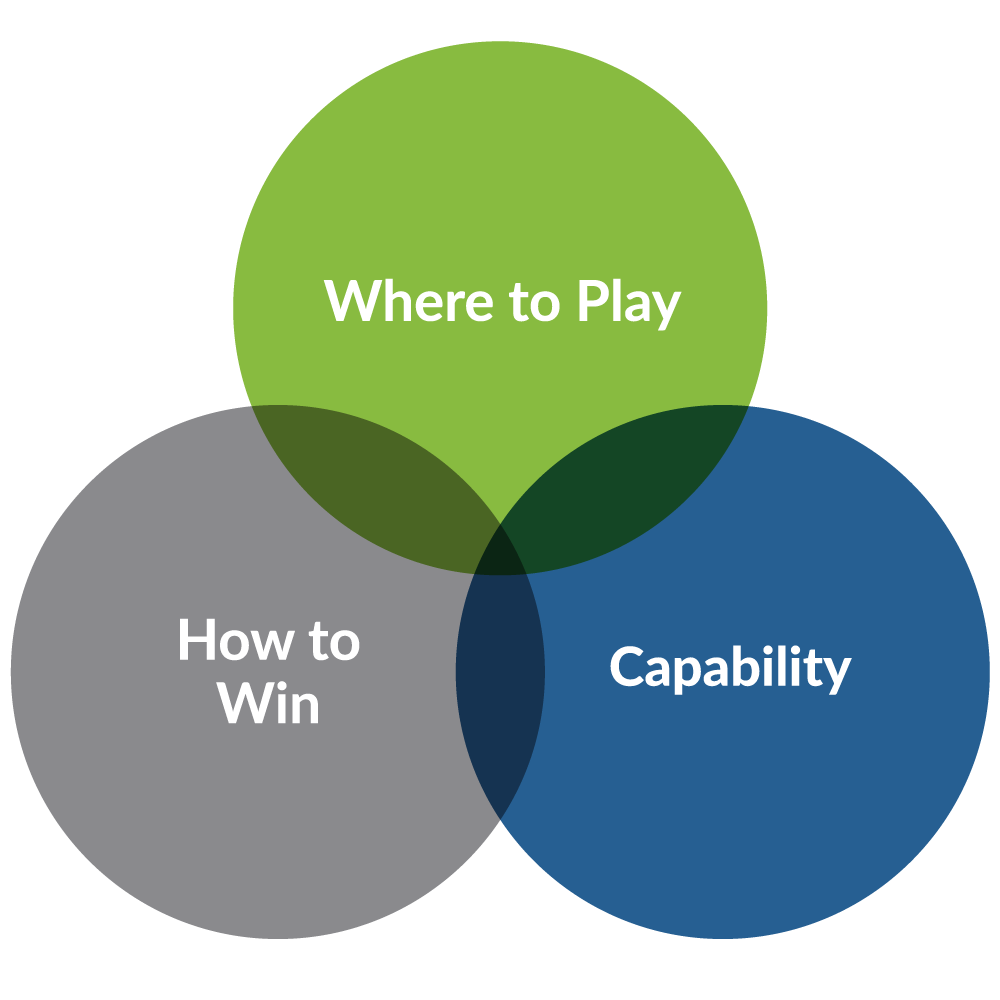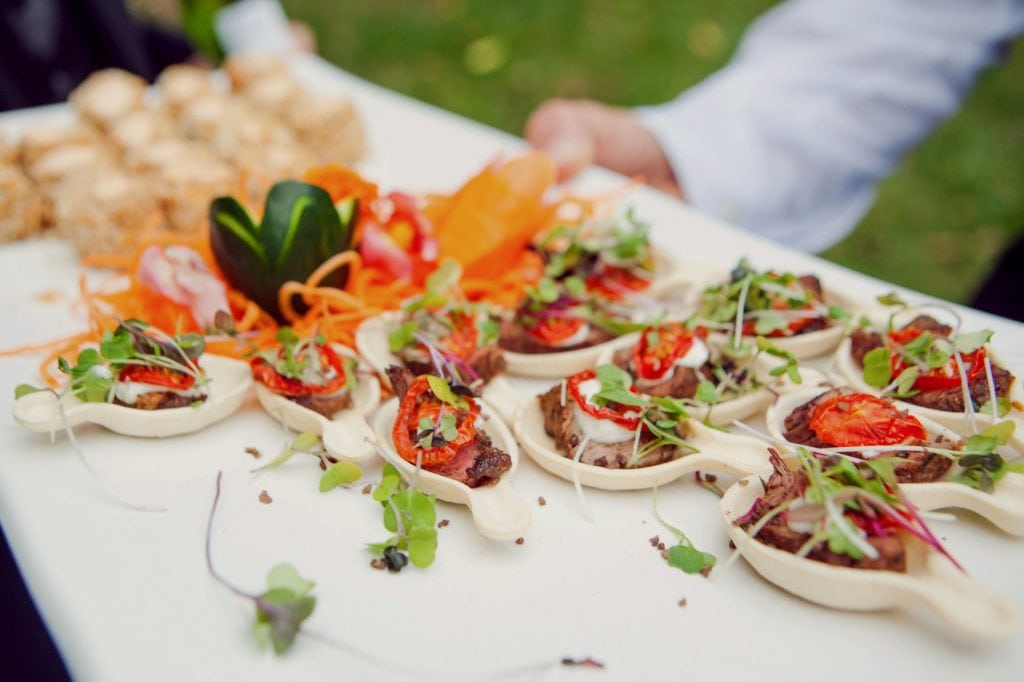This article is part of a series called “Getting Off-Premises”, which examines how to build an off-premises business.
When considering whether off-premises catering is right for your brand, it’s tempting to imagine the endgame: food deliveries flying out the door, sales flowing in, profits increasing. But you can’t build that catering business without a framework for success.
Your catering business plan should begin by answering the following questions:
- Where will you play?
- What are your capabilities?
- How will you win?
Every business, like every building, needs a solid foundation if it is to remain standing. If you want to solidify the long-term success of your organization, you must first tackle these three elements of building a catering business: First, understand your potential customer’s catering needs and how you will address them (Where to Play). Work out your organizational commitment and resources (Capabilities). Finally, develop an action plan for success (How to Win). Each of these critical elements of your plan is important on its own; however, all are intimately linked to one another and need to be considered holistically.
Where will you play?
The catering market in the United States, according to Technomic’s 2017 “Catering Usage and Preferences” report, topped $58 billion. Of that market, more than a third—over $22 billion—went to business catering (B2B), and the balance of nearly $36 billion went to social catering (B2C). Where you should play in this large market can be determined by:
- Understanding how your menu meets the needs of each segment
- The physical location of your restaurant(s) or catering facility
The B2B consumer, located primarily in urban or suburban locations dense with offices, orders food frequently. In fact, over 70 percent of these consumers order at least once a month. They need food for meetings, presentations, events, working lunches, and special occasions. They prefer food that is easy to set up and simple for attendees to enjoy. Box lunches, platters, and “build your own” food bars (customizable grain bowls, salad, burgers, and other options) are popular choices.
On the other hand, the B2C consumer, located primarily in suburban or urban residential locations, orders less frequently. Less than half of these consumers order at least once a month. They need food for family gatherings, special events like birthdays or weddings, holidays, and sporting events. They prefer hot, family-style, shareable items that encourage socializing during the occasion.
What are your capabilities?
When building a catering business plan, you’ll need alignment and commitment from every level of your organization. That includes leadership, franchisees, purchasing departments, marketing teams, the hospitality team, the culinary team, and so on. Don’t foray into this world without everyone being onboard; otherwise, you’ll find yourself halfway into the process without the support and resources necessary to build a sustainable business plan. Rally the troops first!
Simultaneously, determine the resources you have, or will need, to build or expand your catering business. Do you have:
- Someone on the team who can take ownership of catering? (That individual is your point person, but he or she can’t do it alone.)
- Excess human capacity in your restaurant (on-the-clock employees who can be cross-trained), to support catering?
- Adequate prep, staging, and storage space for off-premises orders?
- A point-of-sale system that can help you organize more catering orders?
- Access to drivers, vehicles, or third parties to facilitate delivery?
- Capital to invest in the systems above?
How will you win?
Once you have assessed where you will play, and evaluated your current capabilities, it’s time to create a catering business plan for sustained growth and profitability.
Here are a few critical steps that you should consider for your catering business:
- What are your current catering sales? Based on your understanding of where you will play, create a projection or forecast, for future sales growth.
- What additional resources are necessary to meet that forecast? Based on your assessment of your current capabilities, outline any additional investments that you will need to make. Consider:
- How to drive demand? Employ effective marketing and sales strategies that will reach your targeted catering consumer.
- What investments are needed for operational execution? The B2B and B2C consumers value quality food that is easy to order, prepared accurately, and delivered on time.
Ultimately, your success will be a product of your preparation, planning, execution, and perseverance. Once you tackle the first two elements of building a catering business plan—understanding “Where to Play” and your “Capabilities”—you should arrive at an understanding that will help you create a “How to Win” strategy. That winning strategy, in turn, will allow your team to commit and align to a clearly defined catering goal and action plan.
The catering market is broad and complex. Read our primer on the different market segments.










